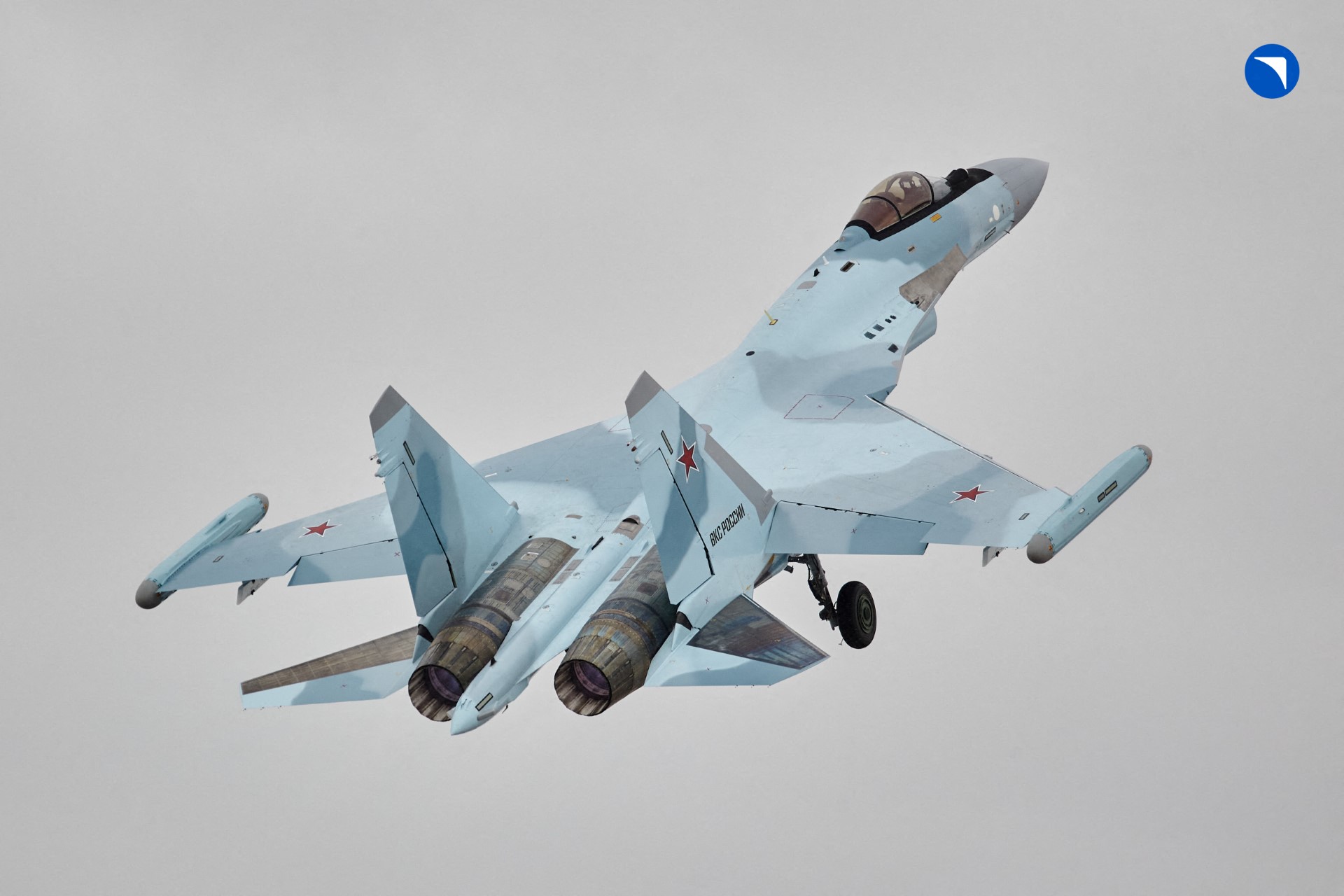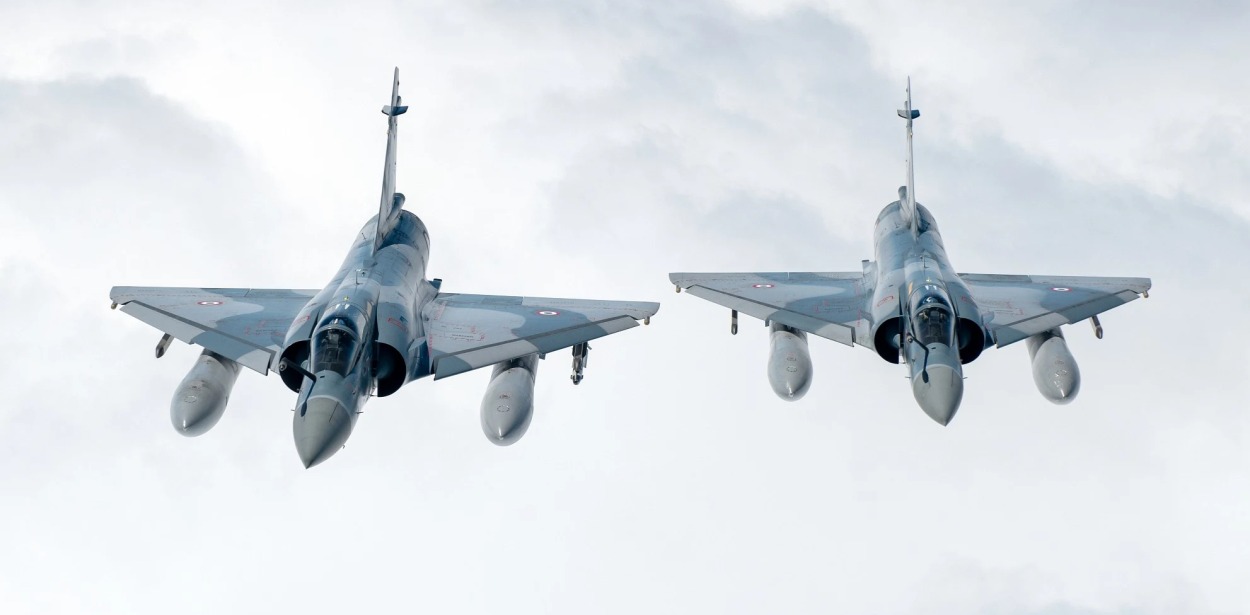As the Russia–Ukraine war approaches its fourth anniversary with neither side able to establish air superiority, both Moscow and Kyiv released sharply contrasting narratives on November 26, 2025, about the performance of their frontline fighter jets.
Russia’s state arms conglomerate Rostec claimed its Su-35S Flanker has effectively pushed Western-supplied F-16s and Mirage 2000s into low-altitude, rear-area operations by dominating beyond-visual-range combat, while the Ukrainian Air Force countered with a video praising the Mirage 2000’s near-perfect success rate in intercepting Russian missiles and drones.
These duelling PR efforts, backed by official footage and senior statements, highlight the continuing technological and tactical struggle for control of Ukrainian skies.
Speaking to the Russian state news agency TASS, Sergey Chemezov, CEO of the state arms conglomerate Rostec, said: “The Su-35S has driven enemy aircraft low, forcing them to fly at minimal altitudes and in rear areas. Meanwhile, the Su-35S engages targets at distances of hundreds of kilometers. That is why enemy aircraft cannot approach the frontlines to launch air-to-air missiles. This includes American F-16s and French-made Mirages.”
He emphasized that Su-35S fighters “effectively engage enemy surface-to-air missile systems in Ukraine. “The Su-35S performs miracles in skilled hands. Importantly, Russian pilots rate the aircraft’s capabilities.”
A video of Russian pilots conducting defensive patrols in Ukraine, covering ground forces and striking enemy positions, was also published.
Russian pilots defend SMO zone from the sky with their Su-35 fighter jet
They cover their brothers on the ground — while striking enemy strongholds and units
Time to say hoorah! pic.twitter.com/cJMaMuUEPr
— RT (@RT_com) November 26, 2025
The Sukhoi Su-35, a 4.5-generation multirole fighter, is one of Russia’s most advanced aircraft, designed for air superiority and precision strike missions.
Evolving from the Su-27, the Su-35 boasts upgraded avionics, powerful AL-41F1S engines with thrust-vectoring, and a top speed of Mach 2.25.
The aircraft is equipped with an Irbis-E radar that can detect targets up to 400 kilometres away. Notably, it carries long-range air-to-air missiles, such as the R-77 or R-37M, which enable it to engage enemy aircraft at long ranges, preventing them from reaching their intended attack lines.
While the R-77 has a range of about 80 kilometres, the R-37M can kill targets over 200 kilometres away. This may explain why the Ukrainian jets are forced to operate behind the frontlines.
The use of long-range missiles by Russian Su-35S likely compels Ukrainian pilots to either stay on the ground or fly low to hug the terrain to evade radar detection. At higher altitudes, the F-16s and Mirages would be visible on Russian radars and vulnerable to missile locks before they could respond.
Defense analyst Guy Plopsky recently posted images of Su-35S conducting a combined CAP/SEAD sortie.
“Its loadout is typical for such missions (often seen in MoD vids): One R-37M AAM (station 2), four R-77-1 AAMs (stations 3, 4, 9 & 10), & a single Kh-31PM ARM (station 12),” he wrote on X. Several Russian sources have claimed destroying Ukrainian S-300 batteries and Patriot launchers in the grinding war.
In August 2025, Rostec wrote in a Telegram post that the VKS has been using the deadly duo of the Su-35S Flanker-E and the Su-34 Fullback fighter-bomber to prevent Ukraine from effectively using Western fighter jets and their powerful weapons in combat.
In a nutshell, the Su-34 launches munitions, and the Su-35S serves as the escort for air superiority missions.
“The Thirty-fifth (Su-35) is a super-maneuverable aircraft that can protect strike groups from threats from above. It is equipped with a phased radar that allows it to detect and track multiple targets. The aircraft can suppress air defense facilities and conduct reconnaissance. The Su-34 is capable of delivering pinpoint strikes deep into the enemy’s rear, where it penetrates with the assistance of its combat comrade, using various means of destruction … the Su-35S with its “long arm” does not allow enemy aircraft to reach the lines of use of weapons,” Rostec said in the message.
However, Russia’s Su-35S fleet has suffered attrition this year. According to Oryx, an open-source intelligence group that visually documents and tracks military equipment losses, the Russian Aerospace Forces (VKS) have lost 8 Su-35S.
In June 2025, the Ukrainian Air Force claimed to have downed a Russian Sukhoi Su-35 Flanker-E fighter jet. Reports suggested that the kill was scored by a Ukrainian F-16 AM, but Russia did not acknowledge the loss.

Ukraine Praises Mirage 2000
On November 26, the Ukrainian Air Force published a video of the French-origin Mirage 2000 to highlight the aircraft’s capabilities.
A Mirage 2000 pilot and aviation technicians highlighted the aircraft’s effectiveness in combat and emphasised the need for continued international support for Ukraine’s fight against Russia.
One of the pilots detailed his six months of training in France, whereas a technician demonstrated the aircraft’s external equipment, including the Magic-2 missile, stating that it had proven extremely effective.
The Ukrainian pilot claimed that his single-seat Mirage 2000 fighter has a 98% success rate in taking down hostile missiles and drones. The pilot further highlighted that Russian aircraft are always on the prowl for Ukrainian aircraft.
Notably, the fighter described in the report is based at a forward airstrip that was moved three times in a single week. In fact, the aircraft are evacuated even during enemy fire.
However, officials of the Air Force share that Ukraine lacks long-range weapons to fend against Russia’s massive attacks and needs more new aircraft and missiles.
This comes weeks after Ukrainian President Volodymyr Zelenskyy announced that his country could soon receive additional Mirage 2000 fighter jets from France. “There is a decision regarding additional Mirage fighter jets for Ukraine and missiles for air defense,” he said at the time.
The Mirage 2000-5 is a fourth-generation jet and belongs to the same class of aircraft as the F-16 that the Ukrainian Air Force has been operating since August 2024. Introduced in 1999, the Mirage 2000-5 variant boasts a sophisticated sensor and control system, enhanced air-to-air and air-to-ground combat capabilities, and improved avionics.

France delivered the first batch of Mirage 2000-5 fighter jets to Ukraine in February this year to help Kyiv defend its airspace against Russia.
Kyiv recorded the loss of the first Mirage 2000 in July 2025.
“The pilot reported a failure of aviation equipment to the flight director. He then acted competently, as expected in a crisis, and successfully ejected. The search and rescue team found the pilot, and his condition is stable. There were no casualties on the ground. A special commission has been appointed to establish the causes of the aviation incident,” the Ukrainian Air Force said in a statement at the time.
Since Ukraine has received only a small number of these Western-origin combat jets, every loss is a massive setback to the country’s air defense capabilities.
However, Ukraine has already signed a Letter of Intent (LoI) paving the way for the purchase of up to 100 Rafale and 150 Saab Gripen jets.
The Ukrainian pilot who appeared in the recently published video stated that if partners supply new Rafale, Gripen, or F-35 aircraft for Ukraine’s fleet, the pilots are prepared to quickly become proficient in these aircraft.
- Contact the author at sakshi.tiwari13 (at) outlook.com
- Follow EurAsian Times on Google News




